Today I went to get my hair cut so I look spiffy for Scrubfest II.
Afterwards, I was walking to a local coffee shop and saw some small yellow fruit on the sidewalk. Looking up, I spied their origin – a large pindo palm, growing at the edge of a parking lot.
The fruits were scattered about onto the sidewalk, street, and in the landscaping.
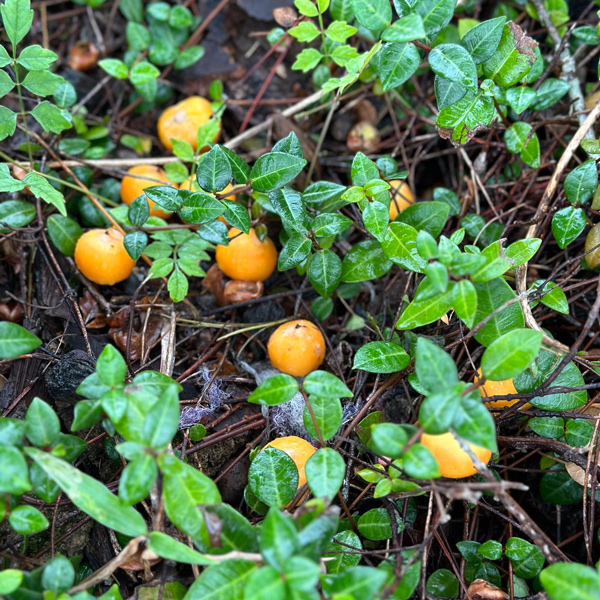
I went and got my coffee, drank it, then returned and filled the empty cup with ripe pindo fruit.
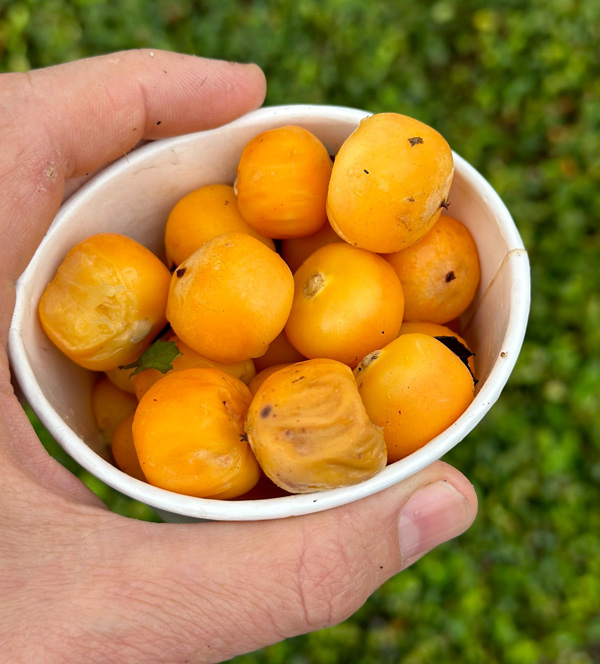
Then I filmed a short video and posted it, so others could see what a pindo palm looks like and know about its delicious edible fruit.
Though, I must say, the fruit really aren’t that delicious right off the tree. They are fibrous and a little astringent, with flavors of coconut and mango – but they become REALLY delicious when you process them into pindo jelly, and that’s what I did this afternoon.
First, I pitted them, simply by smashing the fruit between my fingers and removing as much of the flesh from the pit as possible.
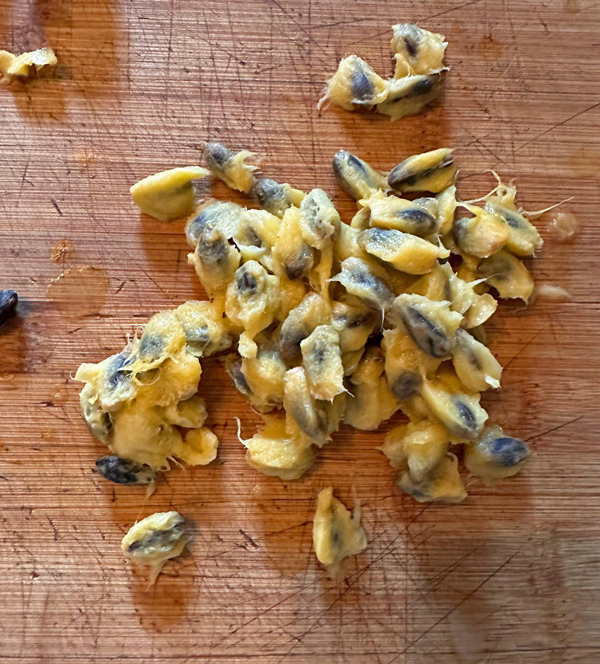
Those pits will be planted in the nursery, incidentally, so we can grow many more pindo palms.
Then I put all the fruit into a pot and added a quart of water and a cup of sugar, used a submersible blender to mash it all up, skins and all, then boiled it for a bit.
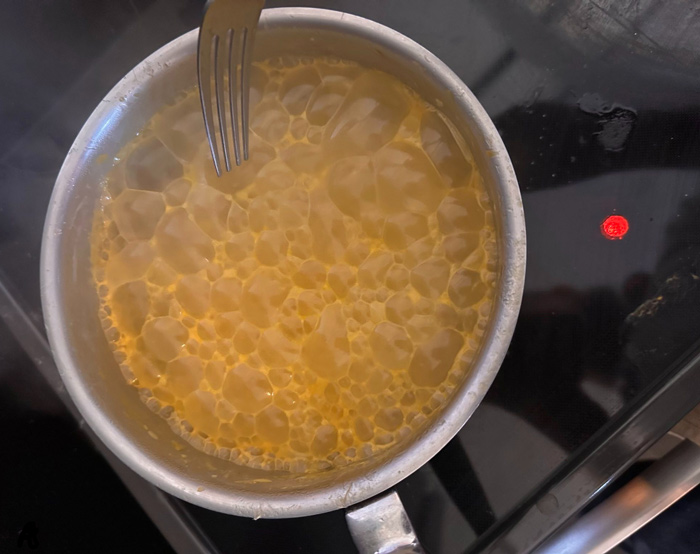
Once it had boiled for ten minutes or so, I strained out the fibrous pulp by pouring the hot mash through a sieve.
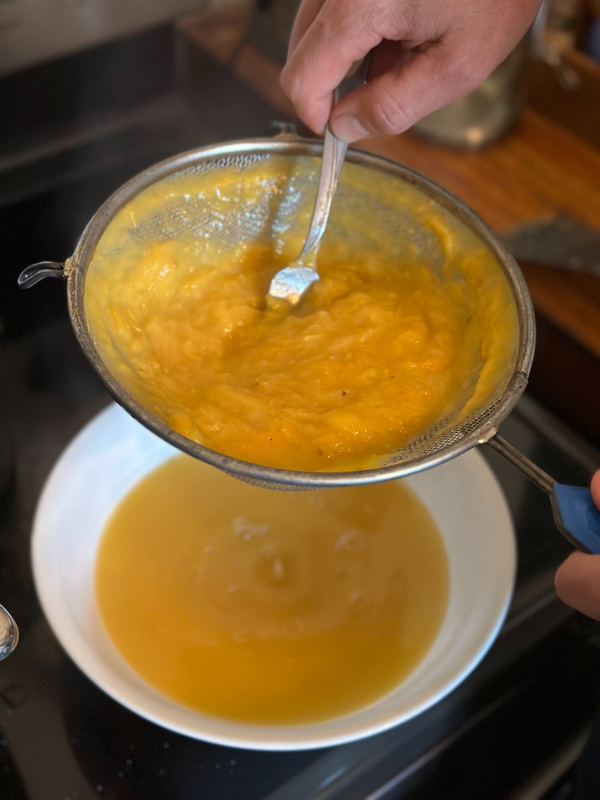
It takes some smashing of the pulp to release all the juice. Just mash it with the back of a spoon or fork against the sieve. There are a lot of tough fibers in the fruit which aren’t that palatable. You want to leave most of them in the sieve and not in your jam/jelly.
Once I had my strained, fiber-free half-cooked juice, I put it back on the stove to cook down. I added a teaspoon of salt and then let it cook for about 45 minutes or so, stirring regularly, until it was jam-thick, then poured it in jars.
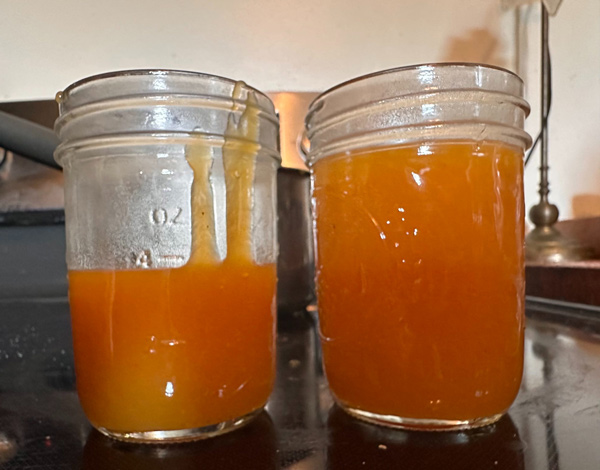
I only foraged about 3-4 cups of fruit so getting a 3/4 pint of jam isn’t bad.
The flavor as jam is tart and sweet, with rich coconut and mango flavors, along with a strong overtone of salted butter. It’s truly amazing.
You can read more about pindo palm here.
And here, on Green Deane’s site.


4 comments
Will this work with Queen Palm fruit?
I don’t think they taste good, plus the fruit is thin.
Wow! After a decade of cleaning up squashed fruit all over the driveway, we are so thankful for this info. I’m too lazy to make jam, but we love eating the delicious fruit!
Some of them are decent fresh. Others I’ve had aren’t great. But all the ones I made into jam were good.
I bet pigs would like eating them, too. I’m glad you found a use for them!
Comments are closed.